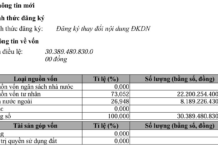Bank savings deposits: A safe investment option
Bank savings deposits offer a secure investment avenue, attracting many individuals. By opening a savings account, individuals can earn interest rates corresponding to their deposit amount and pre-agreed tenure. Upon maturity, customers receive their principal amount along with the accrued interest.
There are two main types of savings deposits: non-term and term deposits.
Criteria for choosing a bank for your savings
Each bank has its unique strengths and characteristics. However, before deciding on a bank for your savings, consider the following criteria:
– Reputation and Trust: Ensuring the safety of your idle funds is paramount. Therefore, opt for a reputable bank with a strong track record and no history of disputes or malpractice involving customers’ deposits.

Opt for banks with a solid reputation in the market. (Illustrative image)
– Attractive Interest Rates: For most savers, higher interest rates are a primary consideration. Opt for banks offering competitive rates to maximize your returns.
– Safety and Security: Ensure your chosen bank has a strong presence and reputation in the domestic and international markets. This ensures your funds are secure, even in unforeseen circumstances.
– Diverse Savings Products: Look for banks offering a wide range of savings products to provide you with more flexibility and control over your savings.
– Customer Service: Choose a bank known for its excellent customer service to promptly address any queries or issues that may arise during your savings journey.
Short-term or long-term deposits: Which is better for higher returns?
The choice between short-term and long-term deposits depends on your individual needs.
If you frequently require access to your funds or need to utilize your capital, short-term deposits (less than 12 months) are a suitable option. This option offers flexibility, allowing you to withdraw funds as needed, and interest is calculated based on the number of days your money is deposited.
On the other hand, if you have a stable income and don’t anticipate needing your idle funds, long-term deposits (over 12 months) can generate higher returns.





































